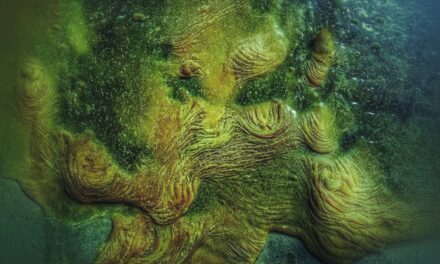Jeanne-Élisabeth Chaudet was born in 1763 in Paris, a city that would become the backdrop for her artistic journey. Growing up in a time when the art world was dominated by male artists, Chaudet’s early life was marked by both privilege and challenge. Her father, a successful sculptor, provided her with an environment rich in artistic influence.
This familial connection to the arts allowed her to cultivate her talents from a young age, as she was exposed to the intricacies of sculpture and the creative process. Despite the societal constraints placed upon women during this period, Chaudet’s determination to pursue her passion for art was unwavering. Chaudet’s formal education began at the prestigious Académie Royale de Peinture et de Sculpture, where she honed her skills under the tutelage of prominent artists.
The academy was a bastion of artistic excellence, and it was here that she developed her unique style and technique. Her education was not merely technical; it also instilled in her a deep understanding of classical themes and the importance of narrative in art. This foundation would later inform her work, as she sought to blend traditional forms with her own innovative interpretations.
The challenges she faced as a woman in a male-dominated field only served to strengthen her resolve, pushing her to excel and carve out a space for herself within the art community.
Summary
- Jeanne-Élisabeth Chaudet was born in France in 1761 and received her artistic education at the prestigious École des Beaux-Arts in Paris.
- Chaudet’s artistic style is characterized by neoclassical influences, with a focus on portraying the female form in a graceful and idealized manner.
- Her work was influenced by the classical sculptures of ancient Greece and Rome, as well as the contemporary neoclassical artists of her time.
- Notable artworks by Chaudet include “Psyche Abandoned” and “Cupid and Psyche”, which have been exhibited in major galleries and museums around the world.
- Chaudet’s portrayal of women in art challenged traditional gender roles and contributed to the feminist art movement of the late 18th century.
Introduction to Jeanne-Élisabeth Chaudet’s Artistic Style
Chaudet’s artistic style is characterised by a remarkable blend of neoclassical elegance and emotional depth. Her sculptures often reflect the ideals of beauty and virtue that were prevalent during the late 18th century, yet they also possess a distinct individuality that sets them apart from her contemporaries. The gracefulness of her figures, combined with their expressive poses, invites viewers to engage with the emotional narratives embedded within her work.
This duality of form and feeling is a hallmark of Chaudet’s artistry, allowing her to transcend mere representation and delve into the realm of human experience. One of the defining features of Chaudet’s style is her meticulous attention to detail. Whether working with marble or plaster, she demonstrated an extraordinary ability to capture the subtleties of human expression and movement.
Her sculptures often convey a sense of dynamism, as if the figures are caught in a moment of action or contemplation. This kinetic quality is further enhanced by her skillful manipulation of light and shadow, which adds depth and dimension to her work. Through her innovative approach, Chaudet not only adhered to the neoclassical ideals of her time but also pushed the boundaries of what sculpture could achieve, paving the way for future generations of artists.
Influences and Inspirations
Chaudet’s artistic development was profoundly influenced by the cultural and intellectual currents of her time. The Enlightenment, with its emphasis on reason, individualism, and the exploration of human emotion, played a significant role in shaping her artistic vision. She drew inspiration from classical mythology and history, often incorporating these themes into her work to explore complex human emotions and moral dilemmas.
The stories of ancient heroes and heroines provided a rich tapestry from which she could weave narratives that resonated with contemporary audiences. In addition to classical influences, Chaudet was also inspired by the burgeoning Romantic movement, which sought to celebrate individual expression and emotional depth. This shift in artistic focus encouraged her to explore themes of love, loss, and resilience in her sculptures.
The works of fellow artists such as Jean-Antoine Houdon and Antonio Canova also left an indelible mark on her style, as she admired their ability to imbue marble with life and emotion. By synthesising these diverse influences, Chaudet developed a distinctive voice that reflected both the traditions of the past and the evolving sensibilities of her time.
Notable Artworks and Exhibitions
Throughout her career, Jeanne-Élisabeth Chaudet created a number of notable artworks that showcased her exceptional talent and innovative approach to sculpture. One of her most celebrated pieces is “La Mort de Sappho,” which captures the tragic beauty of the ancient poetess in a moment of despair. The sculpture exemplifies Chaudet’s ability to convey deep emotion through form, as Sappho’s pose and expression evoke a profound sense of longing and loss.
This work not only highlights Chaudet’s technical prowess but also underscores her commitment to exploring complex narratives within her art. Chaudet’s works were exhibited at various prestigious venues during her lifetime, including the Salon de Paris, where she gained recognition for her contributions to the art world. Her participation in these exhibitions allowed her to connect with other artists and patrons, further solidifying her place within the artistic community.
The acclaim she received for her sculptures not only validated her talent but also challenged prevailing notions about women’s roles in art. By showcasing her work alongside that of male contemporaries, Chaudet helped pave the way for future female artists seeking recognition in a predominantly male-dominated field.
Chaudet’s Impact on the Art World
Jeanne-Élisabeth Chaudet’s impact on the art world extends far beyond her individual works; she played a crucial role in challenging gender norms within the artistic community. At a time when women were often relegated to the margins of artistic practice, Chaudet emerged as a formidable figure who demonstrated that female artists could achieve excellence on par with their male counterparts. Her success served as an inspiration for other women seeking to pursue careers in art, encouraging them to break free from societal constraints and assert their creative voices.
Moreover, Chaudet’s innovative approach to sculpture contributed to the evolution of artistic practices during her time. By blending neoclassical ideals with emotional depth, she expanded the possibilities of what sculpture could convey. Her ability to infuse traditional forms with contemporary themes resonated with audiences and influenced subsequent generations of artists.
As a pioneer in her field, Chaudet not only left an indelible mark on the art world but also helped to redefine the role of women within it.
Exploration of Chaudet’s Use of Materials and Techniques
Chaudet’s mastery of materials is one of the hallmarks of her artistic practice. Working primarily in marble, she demonstrated an exceptional ability to manipulate this challenging medium with precision and grace. Her sculptures exhibit a remarkable level of detail, from the delicate folds of drapery to the nuanced expressions on her figures’ faces.
This meticulous attention to craftsmanship not only showcases her technical skill but also reflects her deep understanding of the material itself. In addition to marble, Chaudet experimented with other materials such as plaster and terracotta, allowing her to explore different textures and finishes in her work. This versatility enabled her to create pieces that varied in scale and style while maintaining a cohesive artistic vision.
Her innovative techniques included using tools such as chisels and rasps to achieve intricate details, as well as employing polishing methods that enhanced the luminosity of her sculptures. Through this exploration of materials and techniques, Chaudet established herself as a true innovator in the realm of sculpture.
Chaudet’s Contribution to the Feminist Art Movement
While Jeanne-Élisabeth Chaudet may not have explicitly identified as a feminist artist during her lifetime, her work undeniably contributed to the foundations of feminist art movements that would emerge in later centuries. By asserting herself as a professional artist in a male-dominated field, she challenged prevailing notions about women’s capabilities and roles within society. Her success served as a powerful statement about women’s potential for creativity and excellence in artistic practice.
Chaudet’s portrayal of women in her sculptures often reflects themes of strength, resilience, and emotional complexity—qualities that resonate with feminist ideals. By depicting female figures not merely as objects of beauty but as individuals with rich inner lives and narratives, she subverted traditional representations of women in art. This nuanced approach laid the groundwork for future feminist artists who sought to reclaim women’s voices and experiences within the artistic canon.
Analysis of Chaudet’s Portrayal of Women in Art
Chaudet’s portrayal of women in her artwork is characterised by a profound sensitivity to their emotional landscapes and experiences. Unlike many of her contemporaries who often depicted women solely as muses or symbols of beauty, Chaudet imbued her female figures with agency and depth. Her sculptures frequently explore themes such as love, loss, and resilience—reflecting the complexities of women’s lives during a time when their voices were often silenced.
One notable example is “La Mort de Sappho,” where Chaudet captures the poetess in a moment of vulnerability yet strength. The figure’s pose conveys both despair and defiance, inviting viewers to empathise with her plight while recognising her inherent power as an artist and thinker. Through such portrayals, Chaudet not only celebrated women’s experiences but also challenged societal expectations surrounding femininity—encouraging audiences to reconsider their perceptions of women in art.
Chaudet’s Legacy and Recognition
Jeanne-Élisabeth Chaudet’s legacy is one that continues to resonate within contemporary discussions about women in art. Although she may not have achieved widespread recognition during her lifetime compared to some male contemporaries, recent scholarship has begun to re-evaluate her contributions and significance within art history. Exhibitions dedicated to female artists have increasingly included Chaudet’s work, highlighting her role as a pioneer who paved the way for future generations.
Her legacy extends beyond mere recognition; it serves as an inspiration for aspiring artists who seek to challenge conventions and assert their creative voices. By examining Chaudet’s life and work, contemporary artists can draw strength from her example—recognising that perseverance in the face of adversity can lead to meaningful contributions within their own artistic practices.
Chaudet’s Influence on Contemporary Artists
The influence of Jeanne-Élisabeth Chaudet can be seen in the works of numerous contemporary artists who continue to explore themes related to femininity, identity, and emotional depth. Many modern sculptors draw inspiration from Chaudet’s ability to convey complex narratives through form—utilising materials such as clay or metal while experimenting with new techniques that echo her innovative spirit. Moreover, contemporary feminist artists often reference Chaudet’s work as they seek to reclaim women’s narratives within art history.
By acknowledging pioneers like Chaudet who navigated similar challenges in their pursuit of artistic expression, these artists create dialogues that bridge past and present—highlighting ongoing struggles for recognition and representation within the art world.
Where to View and Experience Chaudet’s Artworks
For those interested in experiencing Jeanne-Élisabeth Chaudet’s remarkable body of work firsthand, several institutions house significant pieces from her oeuvre. The Musée des Beaux-Arts de Lyon features some notable examples that showcase her mastery over marble sculpture—allowing visitors an opportunity to appreciate both technical skill and emotional resonance present within each piece. Additionally, temporary exhibitions dedicated to female artists often include works by Chaudet—providing context for understanding how she fits into broader narratives surrounding women’s contributions throughout art history.
As interest in rediscovering forgotten female artists continues to grow, opportunities for viewing Chaudet’s work are likely to expand—inviting new audiences into conversations about gender representation within contemporary art practices. In conclusion, Jeanne-Élisabeth Chaudet stands as a significant figure whose contributions have shaped both historical perspectives on women in art and contemporary dialogues surrounding femininity within creative practices today. Through exploring themes related to identity while challenging societal norms surrounding gender roles—her legacy endures—serving as an inspiration for future generations seeking their own paths within this ever-evolving landscape known as “the art world.”
For those interested in exploring different artistic techniques, a helpful article to check out is “Smudge Blend: Using Tortillons and Blending Stumps”. This article provides detailed instructions on how to achieve smooth blending in drawings using these tools. It complements the in-depth guide to the artist Jeanne-Élisabeth Chaudet by offering practical tips for enhancing one’s drawing skills.



